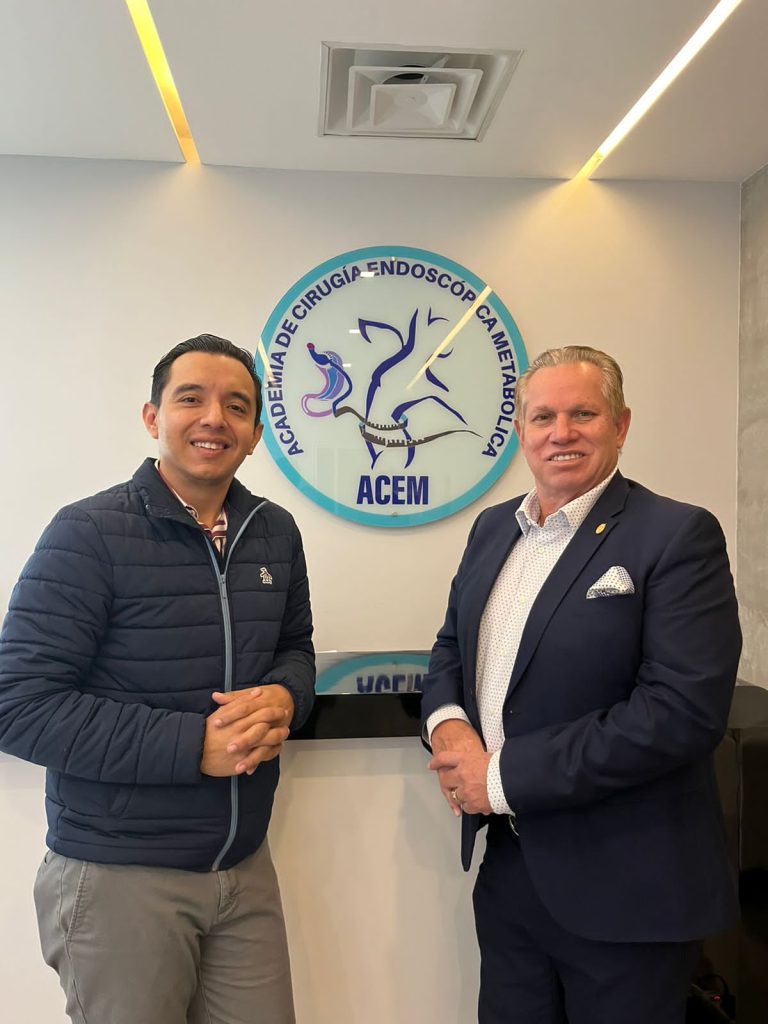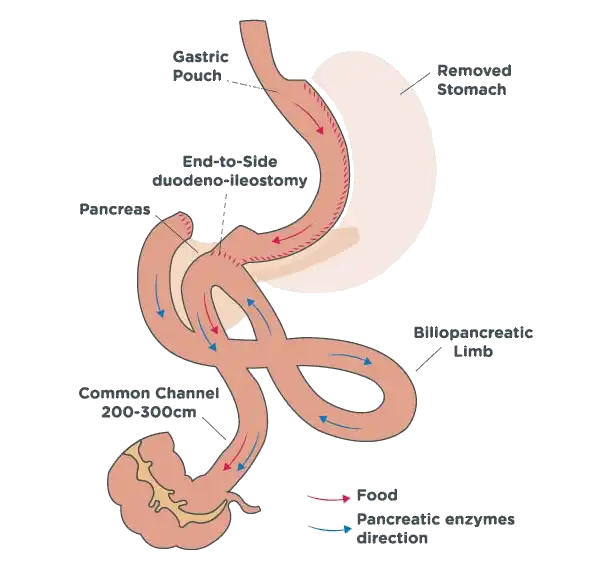
Achieve Real Change with SADI-S Bariatric Procedure
Discover how SADI-S bariatric surgery helps you lose weight, improve health, and reclaim your confidence with one effective procedure.
What is SADI-S Surgery?
SADI-S (Single Anastomosis Duodeno-Ileal Switch) is an advanced type of bariatric surgery that combines two proven techniques:
- Sleeve Gastrectomy: Reduces the size of the stomach so you eat less.
- Duodeno-Ileal Bypass: Reroutes food to bypass much of the small intestine, which lowers calorie absorption.
This simplified approach uses only one intestinal connection (anastomosis), making it less complex than traditional duodenal switch surgery while still offering:
How the Surgery Works (in Simple Steps)
- Sleeve Gastrectomy – About 70-80% of the stomach is removed, leaving a slim, tube-shaped stomach.
- Divide the Duodenum – The first part of the small intestine (just past the stomach) is divided.
- Attach the Small Intestine – A loop of intestine is connected further down (about 250-300 cm from the end in many protocols).
After surgery, food passes through the smaller stomach and then skips a large part of the small intestine. This reduces both how much you can eat and how many calories your body absorbs, which supports major weight loss and can improve conditions like diabetes.
Candidates for SADI-S
Ideal candidates for SADI-S are people :
- With a Body Mass Index (BMI) of 40 or higher.
- With a BMI of 35 or above with obesity related serious health conditions such as type-2 diabetes or heart disease.
- Who have tried and failed to lose weight through diet and exercise alone.
- Who are ready to commit to lifelong lifestyle changes such as healthy diet and physical activity.
As with all surgical procedures, SADI-S is not without risks such as nutritional deficiencies and surgical problems. A proper assessment by a healthcare provider is necessary.
All-Inclusive Pack
Starting at USD 8,500.00
✅ transportation San Diego airport-Tijuana. Tijuana- San Diego airport.
✅ Medical fees.
✅ Hospital fees.
✅Complete PreOp Labs, chest X-Ray, electrocardiogram.
✅ 1 night hotel accommodation before surgery.
✅ 2 days – 1 night in the hospital.
✅ Post-surgical fluroscopy test.
✅ Home medications.
✅ Printed bariatric guide.
The benefits of SADI-S
The many benefits of SADI-S are as follows :
- Significant Weight Loss: SADI-S offers substantial long-term weight loss by combining a reduction in stomach size with a rerouting of the intestines, limiting calorie absorption.
- Improved Metabolic Health: The procedure is effective in improving or resolving conditions such as type-2 diabetes, high blood pressure, and high cholesterol.
- Better Nutrient Absorption: Compared to other malabsorption surgeries, SADI-S carries a lower risk of nutritional deficiencies, as more of the small intestine remains intact.
- Single Anastomosis: The surgery involves only one connection, or anastomosis, between the stomach and intestines, which reduces the risk of complications.
- Durable Results: SADI-S provides durable and sustained weight loss results with a lower likelihood of regaining weight compared to other bariatric procedures.
Our Surgeons

Dr. Jeffry Romero (Left)
- Bariatric Surgeon Certified by the Mexican Council of General Surgery
- With an impeccable track record of +3,000 successful surgeries
Dr. Sergio Verboonen (Right)
- Specialist in General Surgery by the Mexican Council of General Surgery A.C.(9023)
- Mexican Council of Surgery for Obesity and Metabolic Diseases. A.C (COEM1510)
Ready to Get Started?
Our bariatric surgery services offer a path to a healthier, more vibrant you. Whether you’re seeking answers, exploring options, or ready to take the next step, we’re here to guide you. Take the first step towards a transformative change and reach out to us today. Your journey to a happier, healthier life starts here.
The steps involved in a SADI-S (Single Anastomosis Duodenal-Ileal Switch) bariatric surgery are as follows:
- Anesthesia: The patient is placed under general anesthesia to ensure they are unconscious and pain-free during the surgery
- Laparoscopic Access: Small incisions are made in the abdomen, and a laparoscope (a thin tube with a camera) along with surgical instruments are inserted.
- Sleeve Gastrectomy: The surgeon removes about 80% of the stomach, creating s smaller sleeve-shaped stomach that limits food intake.
- Duodenal Transection: the duodenum (the first part of the small intestine) is cut just below the stomach, leaving a small portion connected to the stomach.
- Intestinal Rerouting: The lower part of the small intestine (ileum) is brought up and connected to the remaining duodenum creating a single anastomosis (connection). This reduces the amount of intestine where calories are absorbed.
- Closure: The surgeon removes the laparoscopic instruments and closes the incisions.
- Recovery: The patient is moved to a recovery area to be monitored as they wake up from anesthesia. The hospital stay is typically 2-3 days followed by a recovery period with a specific diet and lifestyle adjustments.

